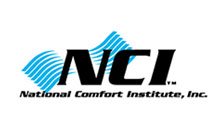Although your first thought for cooling may be air conditioning, there are many alternatives that provide cooling with less energy use. A combination of proper insulation, energy-efficient windows and doors, daylighting, shading, and ventilation will usually keep homes cool with a low amount of energy use in all but the hottest climates. Although ventilation should be avoided in hot, humid climates, the other approaches can significantly reduce the need to use air conditioning.
Ventilation Whether relying on natural ventilation or forcing air through your home with fans, ventilation is the most energy-efficient way to cool your house.
Evaporative Cooling - For homes in dry climates, evaporative cooling or “swamp cooling” provides an experience like air conditioning, but with much lower energy use.
Air Conditioning - Air conditioners range from a small room air conditioner to a large central air conditioning unit. Most air conditioners operate at less than their maximum efficiency, presenting energy-saving opportunities. New air conditioning units are far more efficient than earlier models.
Other Cooling Technologies - Absorption coolers use heat rather than electricity as their energy source, and are now available for large homes. Radiant cooling can be appropriate in arid climates, but is problematic elsewhere. Earth cooling tubes have been installed in a few hundred homes, but the technology is not effective.
Ventilation Systems
Ventilation is the least expensive and most energy-efficient way to cool buildings. Ventilation works best when combined with methods to avoid heat buildup in your home. In some cases, natural ventilation will suffice for cooling, although it usually needs to be supplemented with spot ventilation, ceiling fans and window fans. For large homes, homeowners might want to investigate whole house fans.
Ventilation is ineffective in hot, humid climates where temperature swings between day and night are small. In these climates, attic ventilation can help to reduce your use of air conditioning. Ventilating your attic greatly reduces the amount of accumulated heat, which eventually works its way into the main part of your house. Ventilated attics are about 30°F (16°C) cooler than unventilated attics. Properly sized and placed louvers and roof vents help prevent moisture buildup and overheating in your attic.
Principles of Heating and Cooling - Understanding the roles of conduction, convection, radiation, and perspiration.
Avoiding Heat Buildup - Keeping the outside heat outside, avoiding heat-generating activities, and using spot ventilation can help keep your home cool during hot days.
Natural Ventilation - In some parts of the United States, natural convection and cool breezes are sufficient to keep homes cool.
Ceiling Fans and Other Circulating Fans – Fans that circulate air within your home can improve your comfort level.
Principles of Heating and Cooling – Understanding how heat is transferred from the outdoors into your home and from your home to your body is important for understanding the challenge of keeping your house cool. Understanding the processes that help keep your body cool is important in understanding cooling strategies for your home.
Principles of Heat Transfer
Heat is transferred to and from objects—such as you and your home — via three processes: conduction, radiation, and convection.
Conduction is heat traveling through a solid material. On hot days, heat is conducted into your home through the roof, walls, and windows. Heat-reflecting roofs, insulation, and energy efficient windows will help to reduce that heat conduction.
Radiation is heat traveling in the form of visible and non-visible light. Sunlight is an obvious source of heat for homes. In addition, low-wavelength, non-visible infrared radiation can carry heat directly from warm objects to cooler objects. Infrared radiation is why you can feel the heat of a hot burner element on a stovetop, even from across the room. Older windows will allow infrared radiation coming from warm objects outside to radiate into your home; shades can help to block this radiation. Newer windows have low-e coatings that block infrared radiation. Infrared radiation will also carry the heat of your walls and ceiling directly to your body.
Convection is another means for the heat from your walls and ceiling to reach you. Hot air naturally rises, carrying heat away from your walls and causing it to circulate throughout your home. As the hot air circulates past your skin (and you breathe it in), it warms you.
Cooling Your Body
Your body can cool down through three processes: convection, radiation, and perspiration. Ventilation enhances all these processes. You can also cool your body via conduction—some car seats now feature cooling elements, for instance—but this is not generally practical for use in your home.
Convection occurs when heat is carried away from your body via moving air. If the surrounding air is cooler than your skin, the air will absorb your heat and rise. As the warmed air rises around you, cooler air moves in to take its place and absorb more of your warmth. The faster this convecting air moves, the cooler you feel.
Radiation occurs when heat radiates across the space between you and the objects in your home. If objects are warmer than you are, heat will travel toward you. Removing heat through ventilation reduces the temperature of the ceiling, walls, and furnishings. The cooler your surroundings, the more you will radiate heat to the objects, rather than the other way around.
Perspiration can be uncomfortable, and many people would prefer to stay cool without it. However, during hot weather and physical exercise, perspiration is the body’s powerful cooling mechanism. As moisture leaves your skin pores, it carries a lot of heat with it, cooling your body. If a breeze (ventilation) passes over your skin, that moisture will evaporate more quickly, and you’ll be even cooler.
Avoiding Heat Buildup
To avoid heat buildup in your home, plan ahead by landscaping your lot to shade your house. If your replace your roof, use a light-colored material to help it reflect heat. Insulate your house to at least the recommended levels to help keep out the heat, and consider using a radiant barrier.
On hot days, whenever outdoor temperatures are higher than the temperature inside your house, close tightly all the windows and exterior doors. Also install window shades or other window treatments and close the shades. Shades will help block out not only direct sunlight, but also radiated heat from the outdoors, and insulated shades will reduce the conduction of heat into your home through your windows.
Cooking can be a major source of heat within a home. On hot days, avoid using the oven; cook on the stovetop, or better yet, use only a microwave oven. For stovetop or oven cooking, use the spot ventilation of your oven hood to help remove the heat from the house (this will suck some hot outside air into your home, so don’t overdo it). Outdoor grilling is a great way to avoid cooking indoors, and of course, going out to eat or ordering take-out work as well.
Bathing, washing laundry, and other activities can also pump heat into your home. When you shower or take a bath, use the spot ventilation of a bathroom fan to remove the heat and humidity from your home. Your laundry room might also benefit from spot ventilation. If your use an electric dryer, be sure it’s vented to the outside (for safety, gas dryers should ALWAYS be vented to the outside). If your live in an older home with a sump that your laundry drains to, drain the sump after running any loads in hot water (or better yet, avoid using hot water for your laundry). Finally, avoid any activities that generate a lot of heat, such as running a computer, burning open flames, running a dishwasher, and using hot devices such as curling irons or hair dryers. Even stereos and televisions will add some heat to your home.
Natural Ventilation
Natural ventilation relies on the wind and the “chimney effect” to keep a home cool. Natural ventilation works best in climates with cool nights and regular breezes.
The wind will naturally ventilate your home by entering or leaving windows, depending on their orientation to the wind. When wind blows against your home, air is forced into your windows on the side facing into the wind, while a natural vacuum effect tends to draw air out of windows on the leeward (downwind) side. In coastal climates, many seaside buildings are designed with large ocean-facing windows to take advantage of cooling sea breezes. For drier climates, natural ventilation involves avoiding heat buildup during the day and ventilating at night.
The chimney effect relies on convection and occurs when cool air enters a home on the first floor or basement, absorbs heat in the room, rises, and exits through upstairs windows. This creates a partial vacuum, which pulls more air in through lower-level windows. The effect works best in open-air designs with cathedral ceilings and windows located near the top of the house, in clerestories, or in operable skylights.
Passive solar homes are often designed to take advantage of convection to distribute heat evenly through the home. These homes are often amenable to natural ventilation by ventilating them near the top.
Natural ventilation can be enhanced or diminished through landscaping. Depending on the house design and wind direction, a windbreak—like a fence, hedge, or row of trees that blocks the wind—can force air either into or away from nearby windows.
Ceiling Fans and Other Circulating Fans
Circulating fans include ceiling fans, table fans, floor fans, and fans mounted to poles or walls. These fans create a wind chill effect that will make you more comfortable in your home, even if it’s also cooled by natural ventilation or air conditioning. Ceiling fans are considered the most effective of these types of fans, since they effectively circulate the air in a room to create a draft throughout the room.
If your use air conditioning, a ceiling fan will allow you to raise the thermostat setting about 4°F with no reduction in comfort. In temperate climates, or during moderately hot weather, ceiling fans may allow you to avoid using your air conditioner altogether. Install a fan in each room that needs to be cooled during hot weather.
Ceiling fans are only appropriate in rooms with ceilings at least eight feet high. Fans work best when the blades are 7–9 feet above the floor and 10–12 inches below the ceiling. Fans should be installed so their blades are no closer than 8 inches from the ceiling and 18 inches from the walls.
Larger ceiling fans can move more air than smaller fans. A 36- or 44-inch diameter fan will cool rooms up to 225 square feet, while fans that are 52 inches or more should be used in larger rooms. Multiple fans work best in rooms longer than 18 feet. Small- and medium-sized fans will provide efficient cooling in a 4- to 6-foot diameter area, while larger fans are effective up to 10 feet.
A larger blade will also provide comparable cooling at a lower velocity than a smaller blade. This may be important in areas where loose papers or other objects will be disturbed by a strong breeze. The fan should also be fitted to the aesthetics of the room—a large fan may appear overpowering in a small room.
A more expensive fan that operates quietly and smoothly will probably offer more trouble-free service than cheaper units. Check the noise ratings, and, if possible, listen to your fan in operation before you buy it.
When buying window fans, look for the ENERGY STAR label. Fans that earn the label move air 20% more efficiently, on average, than standard models.
Whole House Ventilation
Whole house ventilation using a whole house fan can substitute for an air conditioner most of the year in most climates. Whole house fans combined with ceiling fans and other circulating fans provide acceptable summer comfort for many families, even in hot weather. In addition to whole house fans, the ducts of your central heating and cooling system can be modified to provide whole house ventilation.
How Whole House Fans Work
The whole house fan pulls air in from open windows and exhausts it through the attic and roof. It provides good attic ventilation in addition to whole house ventilation. Whole house fans should provide houses with 30–60 air changes per hour (varies with climate, floor plan, etc.—check with a professional to determine what is appropriate for your home). The air-change rate you will choose depends on your climate and how much you will depend on the whole house fan for cooling.
Sizing a Whole House Fan
Whole house fans are sized in cubic feet per minute (cfm) of ventilating power. To determine the size you’ll need, first calculate the volume of your house in cubic feet. To do that, multiply the square footage of the floor area you want to cool by the height from floor to ceiling. Take that volume and multiply by 30 to 60 air changes per hour (depending on the power you need). Then, pide by 60 minutes to get the cubic feet per minute of capacity your house requires.
[(Square feet______ x room height______) x 30 or 60/ 60 = cfm required _________. ]
Installing and Using a Whole House Fan
Installing a whole house fan is tricky and should be done by a professional. An experienced professional should perform your attic measurements and install your dedicated circuit wiring and, if needed, your new attic vents.
Attic ventilation will usually need to be increased to exhaust the fan’s air outdoors. You’ll need 2–4 times the normal area of attic vents, or about one square foot of net free area for every 750 cubic feet per minute of fan capacity. The net free area of a vent takes into account the resistance offered by its louvers and insect screens. More vent area is better for optimal whole house fan performance.
If yourr fan doesn’t come with a tight-sealing winter cover, you should either buy one or build one. If your switch between air conditioning and cooling with a whole house fan as the summer weather changes, build a tightly sealed, hinged door for the fan opening that is easy to open and close when switching cooling methods.
Be cautious when operating these large exhaust fans. Open windows throughout the house to prevent a powerful and concentrated suction in one location. If enough ventilation isn’t provided, the fans can cause a backdraft in your furnace, water heater or gas-fired dryer, pulling combustion products such as carbon monoxide into your living space.
Drawbacks of Whole House Fans
Whole house fans can be noisy, especially if improperly installed. In general, a large-capacity fan running at low speed makes less noise than a small fan operating at high speed. All whole house fans should be installed with rubber or felt gaskets to dampen noise. You can set a multi-speed fan to a lower speed when noise is a problem.
Using Your Duct System as a Whole House Fan
You may be able to use the heating and air conditioning ducts in your home as a means of whole house ventilation. This would involve installing an intake duct to pull air into an attic-mounted system that directs the air into your heating and cooling ducts. A damper would control exhaust air from your home into the attic. Check with a local professional to find out if this option is right for you.
Window Fans
Window fans use little energy and can provide effective cooling in many climates. Window fans are best used in windows facing away from the prevailing wind and exhausting hot air from your home. To cool as much of your home as possible, tightly close windows near the fan and open windows in rooms far from the fan, preferably on the windward side of your home. Windows near cooler, shaded outdoor areas provide the best intake air.
In multi-level houses, the fan should be located on the upper level, if possible, and the open windows should be located on a lower level. If that’s not practical, you may want to independently ventilate each level of your home with separate fans.
Depending on the layout of your home, you might want to use several window fans working together to pull the air through your home. For instance, fans in several upstairs bedrooms will assure that each bedroom is cooled, and will work together to pull air in through the rest of your home.
Evaporative Coolers
In this example of an evaporative cooler, a small motor (top) drives a large fan (center) which blows air out the bottom and into your home. The fan sucks air in through the louvers around the box, which are covered with water-saturated absorbent material.
In low-humidity areas, evaporating water into the air provides a natural and energy-efficient means of cooling. Evaporative coolers, also called swamp coolers, rely on this principal, cooling outdoor air by passing it over water-saturated pads, causing the water to evaporate into it. The 15°–40°F-cooler air is then directed into the home, and pushes warmer air out through windows.
When operating an evaporative cooler, windows are opened part way to allow warm indoor air to escape as it is replaced by cooled air. Unlike central air conditioning systems that recirculate the same air, evaporative coolers provide a steady stream of fresh air into the house
Evaporative coolers cost about one-half as much to install as central air conditioners and use about one-quarter as much energy. However, they require more frequent maintenance than refrigerated air conditioners and they’re suitable only for areas with low humidity
Sizing and Selection
Evaporative coolers are rated by the cubic feet per minute (cfm) of air that they deliver to the house. Most models range from 3,000 to 25,000 cfm. Manufacturers recommend providing enough air-moving capacity for 20–40 air changes per hour, depending on climate.
Installation
Evaporative coolers are installed in one of two ways: the cooler blows air into a central location, or the cooler connects to ductwork, which distributes the air to different rooms. Central-location installations work well for compact houses that are open from room to room. Ducted systems are required for larger houses with hallways and multiple bedrooms. Most people install down-flow evaporative coolers on the roofs of their houses. However, many experts prefer to install ground-mounted horizontal units, which feature easier maintenance and less risk of roof leaks.
Small horizontal-flow coolers are installed in windows to cool a room or section of a home. These portable evaporative coolers work well in moderate climates, but may not be able to cool a room adequately in hot climates. Room evaporative coolers are becoming more popular in areas of the western United States with milder summer weather. They can reduce the temperature in a single room by 5°–15°F.
Small, portable evaporative coolers on wheels are now available as well. Although the units have the advantage of portability, their cooling ability is limited by the humidity within your home. Generally, these units will provide only a slight cooling effect.
Operation
An evaporative cooler should have at least two speeds and a vent-only option. During vent-only operation, the water pump does not operate and the outdoor air is not humidified. This lets you use the evaporative cooler as a whole-house fan during mild weather.
Control the cooler’s air movement through the house by adjusting window openings. Open the windows or vents on the leeward side of the house to provide 1–2 square feet of opening for each 1,000 cfm of cooling capacity. Experiment to find the right windows to open and the correct amount to open them. If the windows are open too far, hot air will enter. If the windows are not open far enough, humidity will build up in the home.
You can regulate both temperature and humidity by opening windows in the areas you want to cool, and closing windows in unoccupied areas. Where open windows create a security issue, install up-ducts in the ceiling. Up-ducts open to exhaust warm air into the attic as cooler air comes in from the evaporative cooler. Evaporative coolers installed with up-ducts will need additional attic ventilation.
Optional filters remove most of the dust from incoming air—an attractive option for homeowners concerned about allergies. Filters can also reduce the tendency of some coolers to pull water droplets from the pads into the blades of the fan. Most evaporative coolers do not have air filters as original equipment, but they can be fitted to the cooler during or after installation.
Evaporative Cooler Maintenance
Save yourself a lot of work and money by draining and cleaning your evaporative cooler regularly. Build-up of sediment and minerals should be regularly removed. Coolers need a major cleaning every season, and may need routine maintenance several times during the cooling season.
The more a cooler runs, the more maintenance it will need. In hot climates where the cooler operates much of the time, look at the pads, filters, reservoir, and pump at least once a month. Replace the pads at least twice during the cooling season, or as often as once a month during continuous operation. Some paper and synthetic cooler pads can be cleaned with soap and water or a weak acid according to manufacturer’s instructions. Filters should be cleaned when the pads are changed or cleaned. Be sure to disconnect the electricity to the unit before servicing it.
Two-Stage Evaporative Coolers
Two-stage evaporative coolers are newer and even more efficient. They use a pre-cooler, more effective pads, and more efficient motors, and don’t add as much humidity to the home as single-stage evaporative coolers. Because of their added expense, they are most often used in areas where daytime temperatures frequently exceed 100°F.
Drawbacks of Evaporative Coolers
Evaporative coolers should not be used in humid climates because they add humidity. Also, they cool your house down to a higher temperature than an air conditioner would. They require maintenance (albeit easy) about once a month. If the cooler is installed on the roof, there is some roof deterioration caused by routine maintenance trips. A sunlit rooftop cooler will be about 1°F less effective than a shaded cooler. Rooftop maintenance also requires using a ladder, which may be an inconvenience. By their nature, evaporative coolers also continually use water. In areas with limited water supplies, homeowners may be concerned about the water-use impact of adding an evaporative cooler.
Air Conditioning
Two-thirds of all homes in the United States have air conditioners. Air conditioners use about 5% of all the electricity produced in the United States, at a cost of over $11 billion to homeowners. As a result, roughly 100 million tons of carbon dioxide are released into the air each year—an average of about two tons for each home with an air conditioner.
Switching to high-efficiency air conditioners and taking other actions to keep your home cool could reduce this energy use by 20%–50%. For general information on how air conditioners work and how best to maintain them, see the following:
- How Air Conditioners Work
- Maintaining Your Air Conditioner
- Common Problems with Air Conditioners
- Hiring Professional Services
The two most common types of air conditioners are room air conditioners and central air conditioners. A compromise between the two types of systems is provided by ductless, mini-split air conditioners. See the following for specific information relating to these air conditioners:
- Central Air Conditioners
- Ductless Mini-Split Air Conditioners
- Room Air Conditioners
- How Air Conditioners Work
Air conditioners employ the same operating principles and basic components as your home refrigerator. Refrigerators use energy (usually electricity) to transfer heat from the cool interior of the refrigerator to the relatively warm surroundings of your home; likewise, an air conditioner uses energy to transfer heat from the interior of your home to the relatively warm outside environment.
An air conditioner cools your home with a cold indoor coil called the evaporator. The condenser, a hot outdoor coil, releases the collected heat outside. The evaporator and condenser coils are serpentine tubing surrounded by aluminum fins. This tubing is usually made of copper.
A pump, called the compressor, moves a heat transfer fluid (or refrigerant) between the evaporator and the condenser. The pump forces the refrigerant through the circuit of tubing and fins in the coils.
The liquid refrigerant evaporates in the indoor evaporator coil, pulling heat out of indoor air and thereby cooling your home. The hot refrigerant gas is pumped outdoors into the condenser where it reverts back to a liquid, giving up its heat to the outside air flowing over the condenser’s metal tubing and fins.
Throughout the second half of the 20th century, nearly all air conditioners used chlorofluorocarbons (CFCs) as their refrigerant, but because these chemicals are damaging to Earth’s ozone layer, CFC production stopped in the United States in 1995. Nearly all air conditioning systems now employ halogenated chlorofluorocarbons (HCFCs) as a refrigerant, but these are also being gradually phased out, with most production and importing stopped by 2020 and all production and importing stopped by 2030.
Production and importing of today’s main refrigerant for home air conditioners, HCFC-22 (also called R-22), will begin to be phased out in 2010 and will stop entirely by 2020. However, HCFC-22 is expected to be available for many years as it is recovered from old systems that are taken out of service. As these refrigerants are phased out, ozone-safe hydrofluorocarbons (HFCs) are expected to dominate the market, as well as alternative refrigerants such as ammonia.
Maintaining Your Air Conditioner
An air conditioner’s filters, coils, and fins require regular maintenance for the unit to function effectively and efficiently throughout its years of service. Neglecting necessary maintenance ensures a steady decline in air conditioning performance while energy use steadily increases.
Air Conditioner Filters
The most important maintenance task that will ensure the efficiency of your air conditioner is to routinely replace or clean its filters. Clogged, dirty filters block normal air flow and reduce a system’s efficiency significantly. With normal air flow obstructed, air that bypasses the filter may carry dirt directly into the evaporator coil and impair the coil’s heat-absorbing capacity. Keeping the filter clean can lower your air conditioner’s energy consumption by 5%–15%.
For central air conditioners, filters are generally located somewhere along the return duct’s length. Common filter locations are in walls, ceilings, furnaces, or in the air conditioner itself. Room air conditioners have a filter mounted in the grill that faces into the room.
Some types of filters are reusable; others must be replaced. They are available in a variety of types and efficiencies. Clean or replace your air conditioning system’s filter or filters every month or two during the cooling season. Filters may need more frequent attention if the air conditioner is in constant use, is subjected to dusty conditions, or you have fur-bearing pets in the house.
Air Conditioner Coils
The air conditioner’s evaporator coil and condenser coil collect dirt over their months and years of service. A clean filter prevents the evaporator coil from soiling quickly. In time, however, the evaporator coil will still collect dirt. This dirt reduces air flow and insulates the coil, reducing its ability to absorb heat. To avoid this problem, check your evaporator coil every year and clean it as necessary.
Outdoor condenser coils can also become very dirty if the outdoor environment is dusty or if there is foliage nearby. You can easily see the condenser coil and notice if dirt is collecting on its fins.
You should minimize dirt and debris near the condenser unit. Your dryer vents, falling leaves, and lawn mower are all potential sources of dirt and debris. Cleaning the area around the coil, removing any debris, and trimming foliage back at least 2 feet (0.6 meters) allow for adequate air flow around the condenser.
Coil Fins
The aluminum fins on evaporator and condenser coils are easily bent and can block air flow through the coil. Air conditioning wholesalers sell a tool called a “fin comb” that will comb these fins back into nearly original condition.
Condensate Drains
Occasionally pass a stiff wire through the unit’s drain channels. Clogged drain channels prevent a unit from reducing humidity, and the resulting excess moisture may discolor walls or carpet.
Window Seals for Room Air Conditioners
At the start of each cooling season, inspect the seal between the air conditioner and the window frame to ensure it makes contact with the unit’s metal case. Moisture can damage this seal, allowing cool air to escape from your house.
Preparing for Winter
In the winter, either cover your room air conditioner or remove and store it. Covering the outdoor unit of a central air conditioner will protect the unit from winter weather and debris.
Common Problems with Air Conditioners
One of the most common air conditioning problems is improper operation. If yourr air conditioner is on, be sure to close your home’s windows and outside doors. For room air conditioners, isolate the room or a group of connected rooms as much as possible from the rest of your home.
Other common problems with existing air conditioners result from faulty installation, poor service procedures, and inadequate maintenance. Improper installation of a central air conditioner can result in leaky ducts and low airflow. Many times, the refrigerant charge (the amount of refrigerant in the system) does not match the manufacturer’s specifications. If proper refrigerant charging is not performed during installation, the performance and efficiency of the unit is impaired. Unqualified service technicians often fail to find refrigerant charging problems or even worsen existing problems by adding refrigerant to a system that is already full.
Air conditioner manufacturers generally make rugged, high quality products. If yourr air conditioner fails, begin by checking any fuses or circuit breakers. Let the unit cool down for about five minutes before resetting any breakers. If a central air conditioner’s compressor stops on a hot day, the high-pressure limit switch may have tripped; reset it by pushing the button, located in the compressor’s access panel. Other common reasons for air conditioner failures are listed below.
Refrigerant Leaks
If yourr air conditioner is low on refrigerant, either it was undercharged at installation, or it leaks. If it leaks, simply adding refrigerant is not a solution. A trained technician should fix any leak, test the repair, and then charge the system with the correct amount of refrigerant. Remember that the performance and efficiency of your air conditioner is greatest when the refrigerant charge exactly matches the manufacturer’s specification, and is neither undercharged nor overcharged. Refrigerant leaks can also be harmful to the environment.
Inadequate Maintenance
If your allow filters and air conditioning coils to become dirty, the air conditioner will not work properly, and the compressor or fans are likely to fail prematurely.
Electric control failure
The compressor and fan controls can wear out, especially when the air conditioner turns on and off frequently, as is common when a system is oversized. Because corrosion of wire and terminals is also a problem in many systems, electrical connections and contacts should be checked during a professional service call.
Sensor problems
Room air conditioners feature a thermostat sensor, located behind the control panel, which measures the temperature of air coming into the evaporative coil. If the sensor is knocked out of position, the air conditioner could cycle constantly or behave erratically. The sensor should be near the coil but not touching it; adjust its position by carefully bending the wire that holds it in place.
Drainage problems
Then it’s humid outside, check the condensate drain to make sure it isn’t clogged and is draining properly. Room air conditioners may not drain properly if not mounted level.
Hiring Professional Services for Air Conditioner Maintenance
When your air conditioner needs more than the regular maintenance described previously, hire a professional service technician. A well-trained technician will find and fix problems in your air conditioning system. However, not all service technicians are competent. Incompetent service technicians forsake proper diagnosis and perform only minimal stop-gap measures. Insist that the technician do the following:
- Check for correct amount of refrigerant
- Test for refrigerant leaks using a leak detector
- Capture any refrigerant that must be evacuated from the system, instead of illegally releasing it to the atmosphere
- Check for and seal duct leakage in central systems
- Measure air flow through the evaporator coil
- Verify the correct electric control sequence and make sure that the heating system and cooling system cannot operate simultaneously
- Inspect electric terminals, clean and tighten connections, and apply a non-conductive coating if necessary
- Oil motors and check belts for tightness and wear
- Check the accuracy of the thermostat.
Central Air Conditioners
Central air conditioners circulate cool air through a system of supply and return ducts. Supply ducts and registers (i.e., openings in the walls, floors, or ceilings covered by grills) carry cooled air from the air conditioner to the home. This cooled air becomes warmer as it circulates through the home; then it flows back to the central air conditioner through return ducts and registers.
Air conditioners help to dehumidify the incoming air, but in extremely humid climates or in cases where the air conditioner is oversized, it may not achieve a low humidity. Running a dehumidifier in your air conditioned home will increase your energy use, both for the dehumidifier itself and because the air conditioner will require more energy to cool your house. A preferable alternative is a dehumidifying heat pipe. which can be added as a retrofit to most existing systems.
Types of Central Air Conditioners
A central air conditioner is either a split-system unit or a packaged unit.
In a split-system central air conditioner, an outdoor metal cabinet contains the condenser and compressor, and an indoor cabinet contains the evaporator. In many split-system air conditioners, this indoor cabinet also contains a furnace or the indoor part of a heat pump. The air conditioner’s evaporator coil is installed in the cabinet or main supply duct of this furnace or heat pump. If yourr home already has a furnace but no air conditioner, a split-system is the most economical central air conditioner to install.
In a packaged central air conditioner, the evaporator, condenser, and compressor are all located in one cabinet, which usually is placed on a roof or on a concrete slab next to the house’s foundation. This type of air conditioner also is used in small commercial buildings. Air supply and return ducts come from indoors through the home’s exterior wall or roof to connect with the packaged air conditioner, which is usually located outdoors. Packaged air conditioners often include electric heating coils or a natural gas furnace. This combination of air conditioner and central heater eliminates the need for a separate furnace indoors.
Choosing or Upgrading Your Central Air Conditioner
Central air conditioners are more efficient than room air conditioners. In addition, they are out of the way, quiet, and convenient to operate. To save energy and money, you should try to buy an energy-efficient air conditioner and reduce your central air conditioner’s energy use. In an average air-conditioned home, air conditioning consumes more than 2000 kilowatt-hours of electricity per year, causing power plants to emit about 3500 pounds of carbon dioxide and 31 pounds of sulfur dioxide.
If your are considering adding central air conditioning to your home, the deciding factor may be the need for ductwork. See the section on limitations when replacing existing systems for more information.
If your have an older central air conditioner, you might choose to replace the outdoor compressor with a modern, high-efficiency unit. If your do so, consult a local heating and cooling contractor to assure that the new compressor is properly matched to the indoor unit. However, considering recent changes in refrigerants and air conditioning designs, it might be wiser to replace the entire system.Today’s best air conditioners use 30%–50% less energy to produce the same amount of cooling as air conditioners made in the mid 1970s. Even if your air conditioner is only 10 years old, you may save 20%–40% of your cooling energy costs by replacing it with a newer, more efficient model.
Proper sizing and installation are key elements in determining air conditioner efficiency. Too large a unit will not adequately remove humidity. Too small a unit will not be able to attain a comfortable temperature on the hottest days. Improper unit location, lack of insulation, and improper duct installation can greatly diminish efficiency.
When buying an air conditioner, look for a model with a high efficiency. Central air conditioners are rated according to their energy efficiency ratio (SEER). SEER indicates the relative amount of energy needed to provide a specific cooling output. Many older systems have SEER ratings of 6 or less. The minimum SEER allowed today is 13. Look for the ENERGY STAR label for central air conditioners with SEER ratings of 13 or greater, but consider using air conditioning equipment with higher SEER ratings for greater savings.
New residential central air conditioner standards went into effect on January 23, 2006. Air conditioners manufactured after January 26, 2006 must achieve a Seasonal Energy Efficiency Ratio (SEER) of 13 or higher. SEER 13 is 30% more efficient than the previous minimum SEER of 10. The standard applies only to appliances manufactured after January 23, 2006. Equipment with a rating less than SEER 13 manufactured before this date may still be sold and installed.
The average homeowner will remain unaffected by this standard change for some time to come. The standards do not require you to change your existing central air conditioning units, and replacement parts and services should still be available for your home’s systems. The “lifespan” of a central air conditioner is about 15 to 20 years. Manufacturers typically continue to support existing equipment by making replacement parts available and honoring maintenance contracts after the new standard goes into effect.
Other Features to Look For When Buying an Air Conditioner:
- A thermal expansion valve and a high-temperature rating (EER) greater than 11.6, for high-efficiency operation when the weather is at its hottest
- A variable speed air handler for new ventilation systems
- A unit that operates quietly
- A fan-only switch, so you can use the unit for nighttime ventilation to substantially reduce air-conditioning costs
- A filter check light to remind you to check the filter after a predetermined number of operating hours
- An automatic-delay fan switch to turn off the fan a few minutes after the compressor turns off.
Installation and Location of Air Conditioners
- If yourr air conditioner is installed correctly, or if major installation problems are found and fixed, it will perform efficiently for years with only minor routine maintenance. However, many air conditioners are not installed correctly. As an unfortunate result, modern energy-efficient air conditioners can perform almost as poorly as older inefficient models.
Be sure that your contractor performs the following procedures when installing a new central air conditioning system:
- Allows adequate indoor space for the installation, maintenance, and repair of the new system, and installs an access door in the furnace or duct to provide a way to clean the evaporator coil
- Uses a duct-sizing methodology such as the Air Conditioning Contractors of America (ACCA) Manual D
- Ensures there are enough supply registers to deliver cool air and enough return air registers to carry warm house air back to the air conditioner
- Installs duct work within the conditioned space, not in the attic, wherever possible
- Seals all ducts with duct mastic and heavily insulates attic ducts
- Locates the condensing unit where its noise will not keep you or your neighbors awake at night, if possible
- Locates the condensing unit where no nearby objects will block the flow of air to it
- Places the condensing unit in a shady spot, if possible, which can reduce your air conditioning costs by 1%–2%
- Verifies that the newly installed air conditioner has the exact refrigerant charge and air flow rate specified by the manufacturer
- Locates the thermostat away from heat sources, such as windows or supply registers.
If your are replacing an older or failed split system, be sure that the evaporator coil is replaced with a new one that exactly matches the condenser coil in the new condensing unit. (The air conditioner’s efficiency will likely not improve if the existing evaporator coil is left in place; in fact, the old coil could cause the new compressor to fail prematurely.)
Back to Air Conditioning
Ductless, Mini-Split Air Conditioners
Ductless, mini split-system air-conditioners (mini splits) have numerous potential applications in residential, commercial, and institutional buildings. The most common applications are in multifamily housing or as retrofit add-ons to houses with “non-ducted” heating systems, such as hydronic (hot water heat), radiant panels, and space heaters (wood, kerosene, propane). They can also be a good choice for room additions and small apartments, where extending or installing distribution ductwork (for a central air-conditioner or heating systems) is not feasible.Like central systems, mini splits have two main components: an outdoor compressor/condenser, and an indoor air-handling unit. A conduit, which houses the power cable, refrigerant tubing, suction tubing, and a condensate drain, links the outdoor and indoor units.
Advantages
The main advantages of mini splits are their small size and flexibility for zoning or heating and cooling inpidual rooms. Many models can have as many as four indoor air handling units (for four zones or rooms) connected to one outdoor unit. The number depends on how much heating or cooling is required for the building or each zone (which in turn is affected by how well the building is insulated). Since each of the zones will have it’s own thermostat, you only need to condition that place when someone is there. This will save energy and money.
Ductless mini split systems are also often easier to install than other types of space conditioning systems. For example, the hook-up between the outdoor and indoor units generally requires only a three inch (~8 centimeter [cm]) hole through a wall for the conduit. Also, most manufacturers of this type of system can provide a variety of lengths of connecting conduits. So, if necessary, you can locate the outdoor unit as far away as 50 feet (~15 meters [m]) from the indoor evaporator. This makes it possible to cool rooms on the front side of a building house with the compressor in a more advantageous or inconspicuous place on the outside of the building.
Since mini splits have no ducts, they avoid the energy losses associated with ductwork of central forced air systems. Duct losses can account for more than 30% of energy consumption for space conditioning, especially if the ducts are in a unconditioned space such as an attic.
In comparison to other add-on systems, mini splits offer more flexibility in interior design options. The indoor air handlers can be suspended from a ceiling, mounted flush into a drop ceiling, or hung on a wall. Floor-standing models are also available. Most indoor units have profiles of about seven inches (~18 cm) deep and usually come with sleek, high-tech-looking jackets. Many also offer a remote control to make it easier to turn the system on and off when it’s positioned high on a wall or suspended from a ceiling. Split-systems can also help to keep your home safer since there is only a small hole in the wall. Through-the-wall and window mounted room air-conditioners can provide an easy entrance for intruders.
Disadvantages
The primary disadvantage of mini splits is their cost. Such systems cost about $1,500-$2,000 per ton (12,000 Btu per hour) of cooling capacity. This is about 30% more than central systems (not including ductwork) and may cost twice as much as window units of similar capacity.
The installer must also correctly size each indoor unit and judge the best location for its installation. Oversized or incorrectly located air-handlers often result in short-cycling, which wastes energy and does not provide proper temperature or humidity control. Too large a system is also more expensive to buy and operate
Some people may not like the appearance of the indoor part of the system. While less obtrusive than a window room air conditioner, they seldom have the built-in look of a central system. There must also be a place to drain condensate water near the outdoor unit.
Qualified installers and service people for mini splits may not be easy to find. In addition, most conventional heating and cooling contractors have large investments in tools and training for sheet metal duct systems. They need to use (and charge for) these to earn a return on their investment, so they may not recommend ductless systems except where a ducted system would be difficult for them to install.
Room Air Conditioners
A room air conditioner features a condenser on the end that faces the outside and a condenser fan behind it that blows air through it, helping to remove the heat from the condenser. On the end facing the room is the evaporator, with an evaporator fan behind that to push the cool air into the room. The filter is mounted in the front grill.
Room air conditioners, sometimes referred to as window air conditioners, cool rooms rather than the entire home or business. If they provide cooling only where they’re needed, room air conditioners are less expensive to operate than central units, even though their efficiency is generally lower than that of central air conditioners.
Smaller room air conditioners (i.e., those drawing less than 7.5 amps of electricity) can be plugged into any 15- or 20-amp, 115-volt household circuit that is not shared with any other major appliances. Larger room air conditioners (i.e., those drawing more than 7.5 amps) need their own dedicated 115-volt circuit. The largest models require a dedicated 230-volt circuit.
Energy Efficiency of Room Air Conditioners
A room air conditioner’s efficiency is measured by the energy efficiency ratio (EER). The EER is the ratio of the cooling capacity (in British thermal units [Btu] per hour) to the power input (in watts). The higher the EER rating, the more efficient the air conditioner. National appliance standards require room air conditioners built after January 1, 1990, to have an energy efficiency ratio (EER) of 8.0 or greater.
The Association of Home Appliance Manufacturers reports that the average EER of room air conditioners rose 47% from 1972 to 1991. If your own a 1970’s-vintage room air conditioner with an EER of 5 and you replace it with a new one with an EER of 10, you will cut your air conditioning energy costs in half.
When buying a new room air conditioner, look for units with an EER of 10.0 or above. Check the EnergyGuide label for the unit, and also look for room air conditioners with the ENERGY STAR® label.
Sizing and Selecting a Room Air Conditioner
The required cooling capacity for a room air conditioner depends on the size of the room being cooled: Room air conditioners generally have cooling capacities that range from 5,500 Btu per hour to 14,000 Btu per hour. A common rating term for air conditioning size is the “ton,” which is 12,000 Btu per hour.
Proper sizing is very important for efficient air conditioning. A bigger unit is not necessarily better because a unit that is too large will not cool an area uniformly. A small unit running for an extended period operates more efficiently and is more effective at dehumidifying than a large unit that cycles on and off too frequently.
Based on size alone, an air conditioner generally needs 20 Btu for each square foot of living space. Other important factors to consider when selecting an air conditioner are room height, local climate, shading, and window size.
Verify that your home’s electrical system can meet the unit’s power requirements. Room units operate on 115-volt or 230-volt circuits. The standard household receptacle is a connection for a 115-volt branch circuit. Large room units rated at 115 volts may require a dedicated circuit and room units rated at 230 volts may require a special circuit.
If your are mounting your air conditioner near the corner of a room, look for a unit that can direct its airflow in the desired direction for your room layout. If your need to mount the air conditioner at the narrow end of a long room, then look for a fan control known as “Power Thrust” or “Super Thrust” that sends the cooled air farther into the room.
Other features to look for:
- A filter that slides out easily for regular cleaning
- Logically arranged controls
- A digital readout for the thermostat setting, and
- A built-in timer.
Installing and Operating Your Room Air Conditioner
A little planning before installing your air conditioner will save you energy and money. The unit should be level when installed, so that the inside drainage system and other mechanisms operate efficiently. If possible, install the unit in a shaded spot on your home’s north or east side. Direct sunshine on the unit’s outdoor heat exchanger decreases efficiency by as much as 10%. You can plant trees and shrubs to shade the air conditioner, but do not block the airflow.
Don’t place lamps or televisions near your air-conditioner’s thermostat. The thermostat senses heat from these appliances, which can cause the air conditioner to run longer than necessary.
Set your air conditioner’s thermostat as high as is comfortably possible in the summer. The less difference between the indoor and outdoor temperatures, the lower your overall cooling bill will be. Don’t set your thermostat at a colder setting than normal when you turn on your air conditioner; it will not cool your home any faster and could result in excessive cooling and unnecessary expense.
Set the fan speed on high, except on very humid days. When humidity is high, set the fan speed on low for more comfort. The low speed on humid days will cool your home better and will remove more moisture from the air because of slower air movement through the cooling equipment.
Consider using an interior fan in conjunction with your window air conditioner to spread the cooled air more effectively through your home without greatly increasing electricity use.
Back to Air Conditioning
Other Cooling Technologies
This section includes absorption cooling, radiant cooling, and earth cooling tubes.
Absorption Cooling
Absorption cooling is essentially an air conditioner driven not by electricity, but by a heat source such as natural gas, propane, solar-heated water, or geothermal-heated water. Because natural gas is the most common heat source for absorption cooling, it is also referred to as gas-fired cooling. Although mainly used in industrial or commercial settings, absorption coolers are now commercially available for large residential homes.
Absorption cooling usually only makes sense in homes without an electricity source, but may also be employed to make use of renewable energy. Absorption cooling is essentially a heat pump technology; absorption coolers are absorption heat pumps that are not set up to allow their use as a heating device. To find out more about absorption cooling, see the section on absorption heat pumps.
Radiant Cooling Radiant cooling cools a floor or ceiling to provide a cooling effect by absorbing the heat radiated from the rest of the room. Although potentially suitable for homes in arid climates, radiant cooling is problematic for homes in more humid climates.
Earth Cooling Tubes Earth cooling tubes involve routing air through underground tubes or chambers to achieve a cooling effect. Although a few hundred systems were build in the 1970s and 1980s, in practice the technology is not effective.
Radiant Cooling
Radiant cooling cools a floor or ceiling by absorbing the heat radiated from the rest of the room. When the floor is cooled, it is often referred to as radiant floor cooling; cooling the ceiling is usually done in homes with radiant panels. Although potentially suitable for arid climates, radiant cooling is problematic for homes in more humid climates.
Most radiant cooling home applications in North America have been based on aluminum panels suspended from the ceiling, through which chilled water is circulated. To be effective, the panels must be maintained at a temperature very near the dew point within the house, and the house must be kept dehumidified. In humid climates, simply opening a door could allow enough humidity into the home to allow condensation to occur.
The panels cover most of the ceiling, leading to high capital expense for the systems. In all but the most arid locations, an auxiliary air-conditioning system will be required to keep the home’s humidity low, adding further to the capital cost. Some manufacturers do not recommend their use in homes, while the Radiant Panel Association suggests they could yield added comfort and energy savings when used in combination with a central air conditioning system.
In addition, the limited U.S. experience with radiant cooling creates concerns about the quality and availability of professionals for installation, maintenance, and repair of a residential system.Despite these caveats, there may be cases where radiant cooling is appropriate for homes, particularly in the arid Southwest. Radiant cooling systems have been embedded in the ceilings of adobe homes, taking advantage of the thermal mass to provide a steady cooling effect.
Homes built on concrete slabs are prime candidates for radiant heating systems, and radiant floor cooling takes advantage of the same principle using chilled water. This is particularly economic in homes with existing radiant floor systems. Again, condensation is a concern, particularly if the floor is covered with heavy carpeting, and the effect is intensified by the tendency of cool air to collect near the floor in stratified layers. This limits the temperature to which the floor can be lowered.
Despite that limitation, a recent study performed by DOE’s Oak Ridge National Laboratory found that some early morning cooling of a home’ s concrete slab, combined with nighttime ventilation, could shift most of the cooling loads for a house to off-peak hours, reducing the electrical demand on electric utilities.
Earth Cooling Tubes
In the 1970s and early 1980s, earth cooling tubes received a great deal of attention from architects, builders, and homeowners as an alternative or aid to conventional air conditioning. While the concept of routing air through underground tubes or chambers to achieve a cooling effect seems like a good idea, in practice it is not very effective, both technically and economically. Perhaps a few hundred systems were constructed, but information on the practical application of the concept is limited. There are few functioning installations, and limited quantitative performance data exists. The following information is a summary of the key points from the citations in the bibliography below.
How They are Supposed to Work
Cooling tubes are long, underground metal or plastic pipes through which air is drawn. The idea is that as the air travels through the pipes, it gives up some of its heat to the surrounding soil, entering the house as cooler air. This will occur only if the earth is at least several degrees cooler than the incoming air.
A cooling tube system uses either an open- or closed-loop configuration. In an open-loop system, outdoor air is drawn into the tubes and delivered directly to the inside of the home. This system provides ventilation while hopefully cooling the home’s interior. In a closed-loop system interior air circulates through the earth cooling tubes. An alternative is to direct the cooled air from either type of system into a mechanical air conditioning system to reduce the air conditioner’s cooling load.
A closed loop does not exchange air with the outside; instead the system recirculates the home’s air through the earth cooling tubes. This makes the closed loop system more efficient than an open loop design, since it does not require as high a degree of dehumidification as an open loop system.
Design Considerations
Tube Material The main considerations in selecting tube material are cost, strength, corrosion resistance, and durability. Tubes made of aluminum, plastic, and other materials have been used. The choice of material has little influence on thermal performance. PVC or polypropylene tubes perform almost as well as metal tubes; they are easier to install, and are more corrosion resistant.
Tube Diameter Optimum tube diameter varies widely with tube length, tube costs, flow velocity, and flow volumes. Diameters between 6 and 18 inches (15.2 and 45.7 centimeters) appear to be most appropriate.
Tube Location Earth temperatures and, consequently, cooling tube performance vary significantly from sunny to shady locations. Where possible, the inlets in open loop systems and the cooling tubes themselves should be placed in shady areas.
Tube Depth Tubes should be buried at least 6 feet (1.8 meters) below grade. Only rarely is burying them more than 12 feet (3.7 meters) justifiable. When digging trenches at these depths, cave-ins are an extreme hazard, and appropriate precautions should be taken.
Earth Temperature The temperature of the earth at depths of 20–100 feet (6.1–30.5 meters) remains about two to three degrees higher than the mean annual air temperature. At depths less than 10–12 feet (3.1–3.7 meters), earth temperatures may be strongly influenced by air temperatures and may vary during the year, depending on the locale. Near the surface, earth temperatures closely correspond to air temperatures.Tube Length There is no simple formula for determining the proper tube length in relation to the amount of cooling desired. Local soil conditions, soil moisture, tube depth, and other site-specific factors should be considered to determine the proper length.Soil Properties The amount of heat conducted and how widely it is diffused varies from one soil type to another. The moisture content of the soil is a major influence on conductivity and diffusivity, and accounts for large variations on how heat moves through the earth.Potential Problems Earth cooling tubes are likely to perform poorly in hot, humid areas, because the ground does not remain sufficiently cool at a reasonable depth during the summer months. Moreover, dehumidification, another equally important aspect of cooling, is difficult to achieve with earth cooling. Mechanical dehumidifiers will most likely be necessary.The dark and humid atmosphere of the cooling tubes may be a breeding ground for odor-producing molds and fungi. Furthermore, condensation or ground water seepage may accumulate in the tubes and encourage the growth of bacteria. Good construction and drainage could eliminate some of these problems.Insects and rodents may enter the tubes of an open-loop system. You should install a sturdy grille and insect screen at the tube inlet to deter potential intruders.Economics Earth cooling tube systems can be very expensive. Considering current electric power rates and the cost of materials and labor, it is unlikely that an earth cooling tube installation can be justified on economic grounds alone.


















